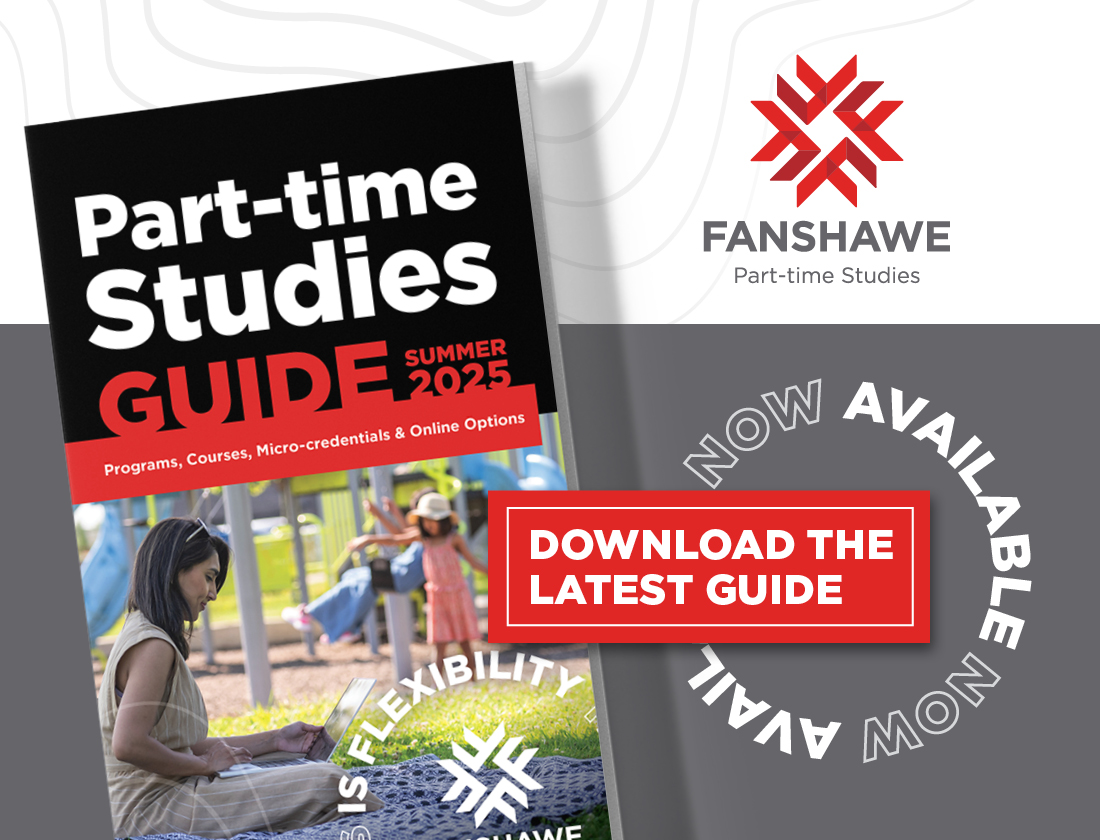
Registration in a program is done on a course-by-course basis each term. The expected availability of courses is displayed below but may change throughout the year. Click on the arrows below to confirm upcoming course offerings and to add a course to your online shopping cart. For assistance, please use the inquiry form on this page or call 519-452-4277.
Overview
Program Description
This program will be of interest to people wanting to learn basic skills in American Sign Language. Students learn to handle basic every day communication. ASL incorporates Deaf Culture and Deaf Community in the content.Courses
Program Requirements
| Level 1 | ||||
| Expected Availability | ||||
| Credits | Fall | Winter | Summer | |
| American Sign Language 101COMM-1084 | 2 | Yes | No | Yes View More Details about COMM-1084 |
This introductory course is designed for the student with no previous knowledge of American Sign Language (ASL) or with limited basic competencies. Students learn to handle basic everyday communication ASL incorporating Deaf culture and Deaf Community content. Topics centre on getting to know you, exchanging personal information, and discussing living situation. Grammar is introduced in context with an emphasis on developing question and answer skills. | ||||
| American Sign Language 102COMM-1085 | 2 | No | Yes | No View More Details about COMM-1085 |
The purpose of the second course in American Sign Language is to further the student's abilities in refining the skills learned/retained in ASL 101. The student learns to handle talking about Family, talking about activities and story telling. Grammar is introduced in context with an emphasis on using question and answer skills, directions, and descriptions. Cultural notes and videotapes provide information on Deaf Culture and Deaf Community. | ||||
| American Sign Language 103COMM-1086 | 2 | Yes | Yes | Yes View More Details about COMM-1086 |
American Sign Language 103, introduces basic ASL conversation and feature core vocabulary, common signing phrases, non manual components (facial expression, body postures), signing space, fingerspelling, numbers, loan signs, cultural protocols, rules of ASL grammar and structure. Deaf cultural behavior is introduced in the classroom and through readings, activities and Deaf community. | ||||
| American Sign Language 104COMM-1123 | 2 | Yes | Yes | No View More Details about COMM-1123 |
American Sign Language 104 introduces basic ASL conversation and features core vocabulary, common signing phrases, non-manual components (facial expression, body postures), signing space, fingerspelling, numbers, loan signs, cultural protocols, rules of ASL grammar and structure. Deaf cultural behavior is introduced in the classroom and through readings, videotapes, and Deaf community events. | ||||
More Information
Learning outcomes
The graduate has reliably demonstrated the ability to:
1. Demonstrate the use of sign language to communicate with others.
2. Use proper hand positions and sentence structure to ask questions- who, what, when, where, why and how;
3. Practice and demonstrate finger spelling;
4. Learn the signs for numbers, letters, clothing, body parts, shapes and colours;
5. Demonstrate the ability to communicate about family; situations and activities;
6. Demonstrate the ability to tell a story;
7. Communicate your preference and needs
Program Details
Download the Part-time Studies Guide
What's included:
- How to assess if part-time learning is right for you
- Part-time learning options and the differences between each
- How to pay for your part-time education
- Part-time options within your area of interest
- How to sign up for part-time studies and where to get help


